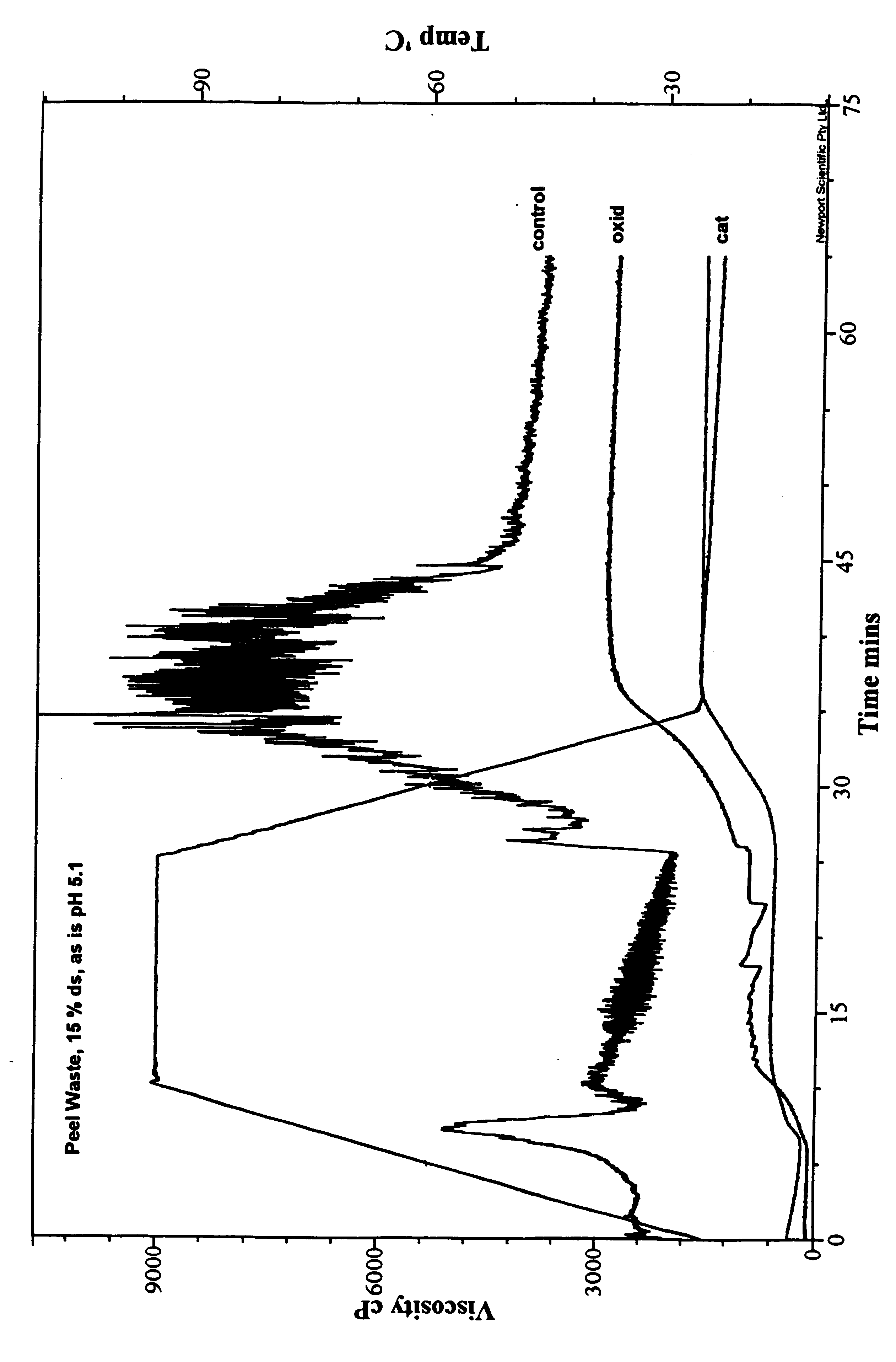Packaging and structural materials comprising potato peel waste
a technology of potato peel waste and packaging, applied in the field of natural materials, can solve the problem that the product of potato peel waste has little commercial valu
- Summary
- Abstract
- Description
- Claims
- Application Information
AI Technical Summary
Benefits of technology
Problems solved by technology
Method used
Image
Examples
example 1
According to this example, the potato peel product of the invention was used as a corrugating adhesive. Conventional corrugating adhesives comprise pearl corn starch or a low oxidized dent corn starch such as Douglas 3018 Corrugating Starch (Penford Corporation, Cedar Rapids, Iowa) combined with caustic and borax. The basic adhesive formula has approximately 20% commercial solids and contains the common additives caustic (sodium hydroxide) and borax. The preparation of the adhesive consists of heating an aqueous suspension of starch in the presence of caustic for the carrier portion, and later adding this to a mixture of the raw starch portion and borax in additional water. The corrugating adhesive is unique in that it has little tack in its prepared form but is cooked in situ after being applied. By the application of heat, a combination of physical and chemical changes occur which result in an almost instantaneous increase in viscosity and setting up of the adhesive.
Specifically, ...
example 2
According to this example, the potato peel waste product of the invention was used as a corrugating adhesive according to the general method of Example 1. Specifically, potato peel waste (9% moisture) which was ground to a size wherein 100% passed through a U.S. Standard No. 60 mesh and was used in place of a conventional corrugating starch according to the formulation of Table 4 below: The formulation of Table 4 was then modified by the substitution of starches for potato peel waste at either or both of the "carrier" starch portion or the "raw" starch portion as set out in Table 5.
The adhesives were prepared according to the conventional procedure of Example 1 and were applied by gravure roll to lightweight and medium weight paper sheets characterized by basis weights of 5.3 and 6.7 pounds per standard ream respectively which were bonded together with a hot iron at its highest heat setting for 10 seconds to gelatinize the cook-up starch in the compositions. After ironing, some of t...
example 3
According to this example, the effect of pH on corrugating adhesives comprising peel waste was determined. While conventional starch-containing corrugating adhesives generally require a high pH to provide good binding properties such a high pH can interfere with printing on the corrugated products. According to this example, the level of NaOH was reduced in producing corrugating adhesives otherwise having the formula of Table 2 above but wherein ground peel waste was substituted for 100% of the starch. The results in Table 6 show that as the pH was lowered from 11.5 to 7.5, strength as measured by Scott Bond dropped significantly for the starch control while the corrugating adhesive comprising peel waste retained significant strength at the lower pH's.
PUM
| Property | Measurement | Unit |
|---|---|---|
| Fraction | aaaaa | aaaaa |
| Fraction | aaaaa | aaaaa |
| Fraction | aaaaa | aaaaa |
Abstract
Description
Claims
Application Information
 Login to View More
Login to View More - R&D
- Intellectual Property
- Life Sciences
- Materials
- Tech Scout
- Unparalleled Data Quality
- Higher Quality Content
- 60% Fewer Hallucinations
Browse by: Latest US Patents, China's latest patents, Technical Efficacy Thesaurus, Application Domain, Technology Topic, Popular Technical Reports.
© 2025 PatSnap. All rights reserved.Legal|Privacy policy|Modern Slavery Act Transparency Statement|Sitemap|About US| Contact US: help@patsnap.com


